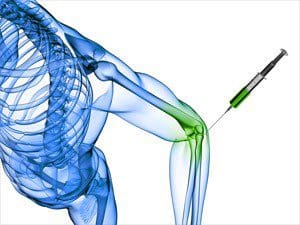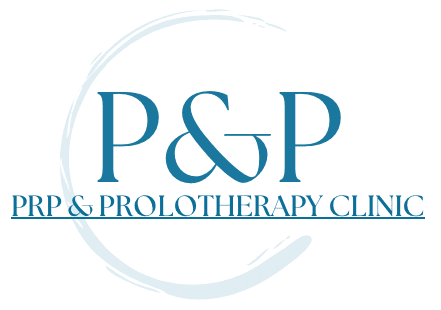PROLOTHERAPY

Prolotherapy in Adelaide
Dr. JA Cook specialises in prolotherapy, regenerative medicine treatment that targets joint and musculoskeletal pain at its source. With personalized care and expertise, Dr. Cook is dedicated to providing non-surgical solutions for chronic pain, helping you regain mobility and improve your quality of life.
What is Prolotherapy?
Prolotherapy, also known as regenerative injection therapy, is a minimally invasive treatment that stimulates the body’s natural healing processes. By injecting a solution directly into damaged ligaments, tendons. prolotherapy promotes tissue repair and strengthens weakened areas, ultimately reducing pain and improving function.
Conditions Treated with Prolotherapy
Dr. Cook offers prolotherapy treatments for a variety of musculoskeletal conditions, including:
- Chronic joint pain
- Osteoarthritis
- Back and neck pain
- And more

Benefits of Prolotherapy
- Non-surgical alternative: Avoid the risks and downtime associated with surgery.
- Long-lasting relief: Prolotherapy targets the root cause of pain for lasting results.
- Improved function: Strengthen weakened ligaments and joints to restore mobility.
- Minimal downtime: Resume normal activities quickly after treatment.
- Safe and natural: Prolotherapy harnesses the body’s innate healing abilities.
Why Choose Dr. JA Cook for Prolotherapy?
- Personalized care: Dr. Cook takes the time to understand your unique needs and goals, creating customized treatment plans for optimal results.
- Expertise: With extensive experience in prolotherapy and regenerative medicine, Dr. Cook delivers expert care and compassionate support.
- Commitment to your well-being: Your comfort and satisfaction are Dr. Cook’s top priorities, and he is dedicated to providing a supportive environment throughout your treatment journey.
FEES MAY BE TAX DEDUCTABLE IF YOU ARE SELF-EMPLOYED
Studies involving Prolotherapy
(Click the study to see more)
Back – A new approach to the treatment of chronic low back pain (click for more)
A NEW APPROACH TO THE TREATMENT OF CHRONIC LOW BACK PAIN
Ongley, ThomasA. Dorman, RobertG. Klein, BjornC. Eek, LawrenceJ Hubert
Abstract
81 patients with chronic low back pain (average duration 10 years) were randomised to two treatment groups. 40 received an empirically devised regimen of forceful spinal manipulation and injections of a dextrose-glycerine-phenol (“proliferant”) solution into soft-tissue structures, as part of a programme to decrease pain and disability. The other 41 patients received parallel treatment in which the main differences were less extensive initial local anaesthesia and manipulation, and substitution of saline for proliferant. Neither patients nor assessors knew which treatment had been given. When assessed by disability scores the experimental group had greater improvement than the control group at one (p<0.001), three (p<0.004), and six (p <0.001) months from the end of treatment; at six months an improvement of more than 50% was recorded in 35 of the experimental group versus 16 of the control group and the numbers free from disability were 15 and 4, respectively (p<0.003). Visual analogue pain scores and pain diagrams likewise showed significant advantages for the experimental regimen.
Meniscal Tears – A Retrospective Study shows Prolotherapy is effective in the treatment of MRI-Documented Meniscal tears and degeneration (click for more)
The Case for Utilizing Prolotherapy as First-Line Treatment for Meniscal Pathology: A Retrospective Study Shows Prolotherapy is Effective in the Treatment of MRI-Documented Meniscal Tears and Degeneration
Ross A. Hauser, MD, Hilary J. Phillips, and Havil S. Maddela
Abstract
Meniscus injuries are a common cause of knee pain, accounting for one sixth of knee surgeries. Tears are the most common form of meniscal injuries and have poor healing ability primarily because less than 25% of the menisci receive a direct blood supply. While surgical treatments have ranged from total to partial meniscectomy, meniscal repair and even meniscus transplantation, all have a high long-term failure rate with the recurrence of symptoms including pain, instability, locking, and re-injury. The most serious of the long-term consequences is an acceleration of joint degeneration. This poor healing potential of meniscus tears and degeneration has led to the investigation of methods to stimulate biological meniscal repair. Research has shown that damaged menisci lack the growth factors to heal. In vitro studies have found that growth factors, including platelet derived growth factor (PDGF), transforming growth factor (TGF), and others, augment menisci cell proliferation and collagen growth manifold. Animal studies with these same growth factors have confirmed that meniscal tears and degeneration can be stimulated to repair with various growth factors or solutions that stimulate growth factor production. The injection technique whereby the proliferation of cells is stimulated via growth factor production is called Prolotherapy. Prolotherapy solutions can include dextrose, human growth hormone, platelet rich plasma, and others, all of which stimulate connective tissue cells to proliferate. A retrospective study was done involving 24 patients, representing 28 knees, whose primary knee complaints were due to meniscal pathology documented by MRI. The average number of Prolotherapy visits was six and the patients were followed on average 18 months after their last Prolotherapy visit. Prolotherapy caused a statistically significant decline in the patients’ knee pain and stiffness. Starting and ending knee pain declined from 7.2 to 1.6, while stiffness went from 6.0 to 1.8. Prolotherapy caused large improvements in other clinically relevant areas such as range of motion, crepitation, exercise, E p i em i o l o gy o M e n i s c l I n j Knee injuries are a common concern resulting in over 1 million surgeries performed to the knee in the United States every year.1-3 According to the National Athletic Trainers’ Association, knee injuries account for 10% to 19% of high school sports injuries and 60.3% of all high school athletic-related surgeries.4 Similar studies of collegiate sports have shown that knee injuries make up 7% to 54% of athletic injuries, varying by the nature of the sport.5-9 The leading injuries to the knee, in both adults and children alike, are primarily patellofemoral derangements or ligament strains and tears.10-12 Secondary to these injuries are meniscal tears, which have generated particular interest in both the young and elderly population as studies over the past several decades have revealed a rise in both degenerative and traumatic meniscal injuries. Meniscal tears occur as early as childhood, where they serve as the leading cause of pediatric arthroscopy, and increase with age and activity.13, 14 An estimated one sixth of knee surgeries are and walking ability. Patients stated that the response to Prolotherapy met their expectations in 27 out of the 28 knees (96%). Only one out of the 28 patients ended up getting surgery after Prolotherapy. Based on the results of this study, Prolotherapy appears to be an effective treatment for meniscal pathology. While this is only a pilot study, the results are so overwhelmingly positive that it warrants using Prolotherapy as first-line therapy for meniscal pathology including meniscal tears and degeneration. Journal of Prolotherapy. 2010;2(3):416-437. KEYWORDS: human growth hormone, meniscal degeneration, meniscal te meniscus, platelet rich plasma, Prolotherapy
Knee – A Retrospective Study on Dextrose Prolotherapy for Unresolved Knee Pain at an Outpatient Charity Clinic in Rural Illinois (click for more)
A Retrospective Study on Dextrose Prolotherapy for Unresolved Knee Pain at an Outpatient Charity Clinic in Rural Illinois
Ross A Hauser, MD & Marion A Hauser, MS, RD
Abstract
The optimal long-term, symptomatic therapy for unresolved knee pain has not been established. Accordingly, we investigated the outcomes of patients undergoing Hackett-Hemwall dextrose Prolotherapy treatment for unresolved knee pain at a charity clinic in rural Illinois. We studied a sample of 80 patients, representing a total of 119 knees, that were treated quarterly with Prolotherapy. On average, 15 months following their last Prolotherapy session, patients were contacted and asked numerous questions in regard to their levels of pain and a variety of physical and psychological symptoms, as well as activities of daily living, before and after their last Prolotherapy treatment. The results of this study showed that patients had a statistically significant decline in their level of pain, stiffness, crunching sensation, and improvement in their range of motion with Prolotherapy. More than 82% showed improvements in walking ability, medication usage, athletic ability, anxiety, depression, and overall disability with Prolotherapy. Ninety-six percent of patients felt Prolotherapy improved their life overall. Conclusion: In this study, patients with unresolved knee pain, treated with dextrose Prolotherapy, showed improvements in many clinically relevant parameters and overall quality of life.
Journal of Prolotherapy. 2009;1(1):11-21.
Hip – A Retrospective Study on Hackett-Hemwall Dextrose Prolotherapy for Chronic Hip Pain at an Outpatient Charity Clinic in Rural Illinois (click for more)
A Retrospective Study on Hackett-Hemwall Dextrose Prolotherapy for Chronic Hip Pain at an Outpatient Charity Clinic in Rural Illinois
By Ross A. Hauser, MD & Marion A. Hauser, MS, RD
Objective: To investigate the outcomes of patients undergoing Hackett-Hemwall dextrose Prolotherapy treatment for chronic hip pain.
Prolotherapy Clinical Research for Chronic Hip Pain: Study Design: Sixty-one patients, representing 94 hips who had been in pain an average of 63 months, were treated quarterly with Hackett-Hemwall dextrose Prolotherapy. This included a subset of 20 patients who were told by their medical doctor(s) that there were no other treatment options for their pain and a subset of eight patients who were told by their doctor(s) that surgery was their only option. Patients were contacted an average of 19 months following their last Prolotherapy session and asked questions regarding their levels of pain, physical and psychological symptoms and activities of daily living, before and after their last Prolotherapy treatment.
Results: In these 94 hips, pain levels decreased from 7.0 to 2.4 after Prolotherapy; 89% experienced more than 50% of pain relief with Prolotherapy; more than 84% showed improvements in walking and exercise ability, anxiety, depression and overall disability; 54% were able to completely stop taking pain medications. The decrease in pain reached statistical significance at the p<.0001 for the 94 hips, including the subset of patients who were told there was no other treatment options for their pain and those who were told surgery was their only treatment option.
Conclusion: In this retrospective study on the use of Hackett-Hemwall dextrose Prolotherapy, patients who presented with over five years of unresolved hip pain were shown to improve their pain, stiffness, range of motion, and quality of life measures even 19 months subsequent to their last Prolotherapy session. This pilot study shows that Prolotherapy is a treatment that should be considered and further studied for people suffering with unresolved hip pain.
Shoulder – A Retrospective Study on Hackett-Hemwall Dextrose Prolotherapy for Chronic Shoulder Pain at an Outpatient Charity Clinic in Rural Illinois (click for more)
A Retrospective Study on Dextrose Prolotherapy for Unresolved Knee Pain at an Outpatient Charity Clinic in Rural Illinois
Ross A Hauser, MD & Marion A Hauser, MS, RD
Abstract
The optimal long-term, symptomatic therapy for unresolved knee pain has not been established. Accordingly, we investigated the outcomes of patients undergoing Hackett-Hemwall dextrose Prolotherapy treatment for unresolved knee pain at a charity clinic in rural Illinois. We studied a sample of 80 patients, representing a total of 119 knees, that were treated quarterly with Prolotherapy. On average, 15 months following their last Prolotherapy session, patients were contacted and asked numerous questions in regard to their levels of pain and a variety of physical and psychological symptoms, as well as activities of daily living, before and after their last Prolotherapy treatment. The results of this study showed that patients had a statistically significant decline in their level of pain, stiffness, crunching sensation, and improvement in their range of motion with Prolotherapy. More than 82% showed improvements in walking ability, medication usage, athletic ability, anxiety, depression, and overall disability with Prolotherapy. Ninety-six percent of patients felt Prolotherapy improved their life overall. Conclusion: In this study, patients with unresolved knee pain, treated with dextrose Prolotherapy, showed improvements in many clinically relevant parameters and overall quality of life.
Journal of Prolotherapy. 2009;1(1):11-21.
Back – Prolotherapy for chronic low back pain: a review of literature (click for more)
Prolotherapy for chronic low back pain: a review of literature
Lorenzo Giordano, William D Murrell, Nicola Maffulli
Abstract
Introduction: Low back pain is common and imposes major societal burdens for patient suffering and costs. Prolotherapy injections are used for musculoskeletal conditions including tendinopathies, osteoarthritis and low back pain to enhance soft-tissue healing. This review aims to clarify the place of prolotherapy in chronic low back pain (CLBP).
Sources of data: Using multiple databases, a systematic search was performed to identify studies detailing the use of prolotherapy to manage CLBP. A total of 12 articles was included in the present work.
Areas of agreement: Considering the level of evidence and the quality of the studies assessed using the modified Coleman Score, prolotherapy is an effective management modality for CLBP patients in whom conservative therapies failed.
Areas of controversy: The presence of co-interventions and the clinical heterogeneity of the work contributes to confound the overall conclusions.
Growing points and areas for research: The analysis of the studies included in the review, using appropriate tools, showed how their quality has decreased over the years, reflecting the need for appropriately powered well planned and performed randomized control trials.
Back – Treatment of painful advanced internal lumbar disc derangement with intradiscal injection of hypertonic dextrose (click for more)
Treatment of painful advanced internal lumbar disc derangement with intradiscal injection of hypertonic dextrose
Matthew R Miller, Robert S Mathews, K Dean Reeves
Abstract
Background: Degenerative discs are thought to produce nerve root pain either mechanically or chemically. Particularly in the case of advanced degenerative disc disease, this clinical entity has often proven to be symptomatically resistant to peridural steroids, Intra-discal Electrothermoplasty (IDET) and direct surgical intervention. Exposure of irritated nerves to hypertonic dextrose is thought to have chemoneuromodulatory potential. Sustained pain reduction has been demonstrated in a pilot study involving injection of a combination of dextrose, glucosamine, chondroitin and dimethylsulfoxide into degenerative discs of patients with chronic low back pain of discogenic origin.
Objective: To assess the effects of disc space injections of hypertonic dextrose in patients experiencing chronic advanced degenerative discogenic leg pain, with or without low back pain.
Study design: Prospective consecutive patient series.
Methods: Patients with moderate to severe degenerative disc disease without herniation and with concordant pain reproduction with CT discography were included. All had failure of a physical therapy trial and substantial but temporary relief with two fluoroscopically guided epidural steroid injections. Patients underwent bi-weekly disc space injection of a solution consisting of 50% dextrose and 0.25% Bupivacaine in the disc(s) found positive on discography. The study was performed in an out-patient surgery center in the United States. Outcome measures included an 11-scale numeric pain score (0-10).
Results: Each patient was injected an average of 3.5 times. Overall, 43.4% of patients fell into the sustained improvement group with an average improvement in numeric pain scores of 71%, comparing pretreatment and 18 month measurements.
Conclusion: The results suggest that intradiscal injection of hypertonic dextrose may have a place in the management of pain arising from advanced lumbar degenerative disc disease.
Schedule Your Consultation Today
Ready to experience the benefits of prolotherapy with Dr. JA Cook? Contact us to schedule a consultation.

